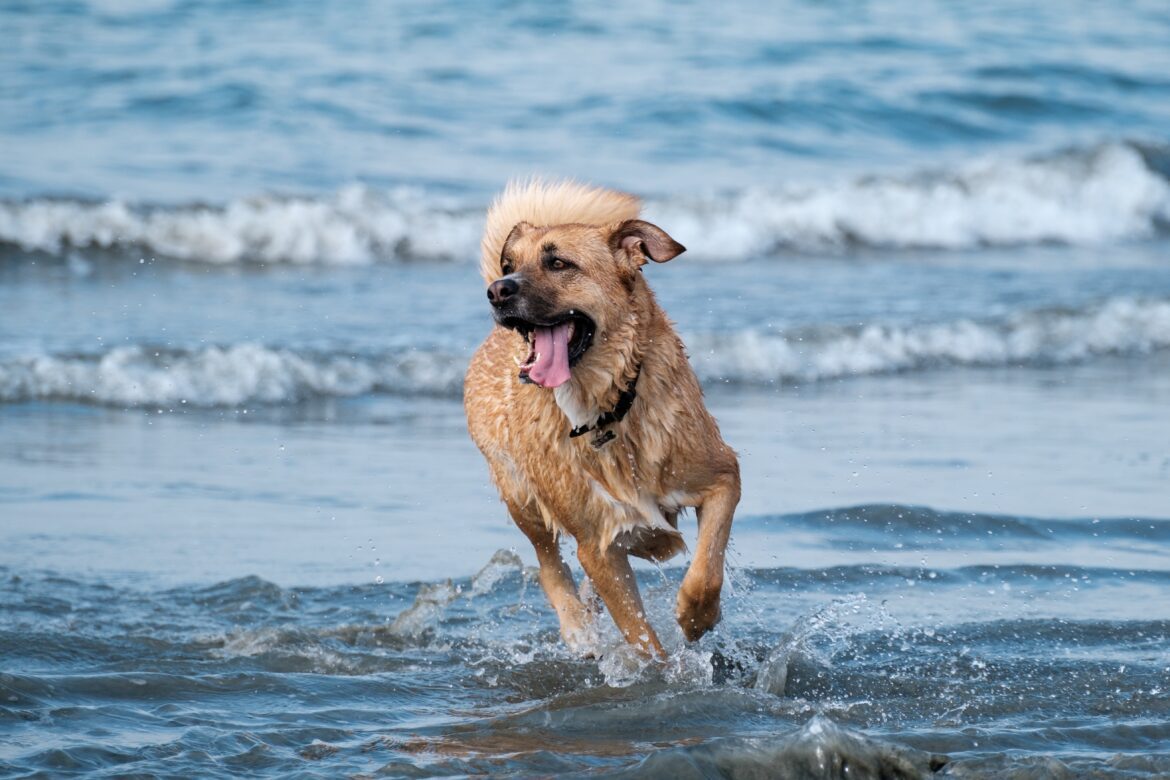The Introduction To water dogs
The water dog breed was originally bred to return water-bound games like geese and ducks. The term today can also be used for dogs who love water.
Water Hounds are hunting dogs that flush birds into the water. An older dog type, these are also used for communication between boats and for recovery of lost items on ships. It became a descendant of modern retrievals.
The waterdog family includes several types, from the ancient Barbet to American Water Spaniels and the Poodle. The following information explains the various water dog types:
American Water Spaniel
These rare dog breeds combine the characteristics of a Spaniel and a Retriever, and these were developed in Wisconsin. They thrive in the boggy Great Lakes marshes and are built for a life on (or in) the water.
American Water Spaniels were bred by duck hunters to be compact and easy to teach so that they could accompany them in small boats. Socialize them as infants because they can be reserved with strangers. Happy American Water Spaniels spend a lot of time playing outside.
 Picture Credit- Getty Images
Picture Credit- Getty Images
Barbet
Welcome to the world of the most popular French water dog! Originally bred for the purpose of hunting ducks, barbets have since evolved into popular pets. Their hairy, curly coats have evolved over millennia to protect them from the cold ocean waters where they live.
Barbets, as long as they get regular exercise, are obedient and easy to train. Having a Barbet in the house will turn you into a grooming fanatic, but their devoted, loving nature is worth the time and effort.
It’s no surprise that this fuzzy pal is fondly referred to as “mud dog” because of his willingness to roll about in the muck.
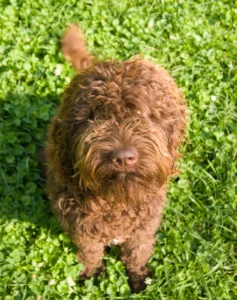
Picture Credit- Getty Images
Boykin spaniel
Boykin Spaniels were developed for use in South Carolina by turkey hunters, but their webbed paws quickly made them the preferred hunting dog in the state’s swampy terrain.
These medium-sized dogs are full of life and love to play with their human companions. The only real care that needs to be given to their silky brown coats is a weekly brushing.
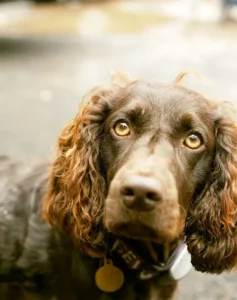
Picture Credit- Getty Images
Brittany
The Brittany was originally developed to hunt, so this active dog needs a lot of playtime. They are typically very sporty and full of pep.
The Brittany, also called a Brittany spaniel, is a water-loving sporting dog, as Brown pointed out. They are full of life and vigor, and their thick coat protects them from the elements. Despite their smaller size, these dogs have long legs that make them excellent swimmers.

Picture Credit- Getty Images
Cantabrian water dog
Cantabria in northern Spain is the birthplace of the Cantabrian Water Dog, one of the few water dog breeds in Spain. In the fishing industry, they played an important role as fish finders, lifeguards, rope carriers, and ship-watcher. Their curly coats earn them the nickname “wool dog” or “perro de lanas” in Spanish.
The ancient breed shares ancestry with the Spanish Water Dog, the Barbet, and the Poodle, among other water dog varieties. Its size and weight set it apart from the Spanish Water Dog. In spite of its relative obscurity beyond Spain, this water-loving breed is very popular there.
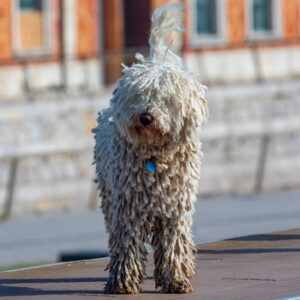
Picture Credit- Getty Images
Chesapeake Bay Retrievers
The Chesapeake bay retriever, sometimes known as a “Chessie,” are popular water dog in America and is known for their high level of activity and athleticism. They excel at hunting and retrieving and are water and nature lovers that adore being active.
They are more successful in this endeavor thanks to their thick, water-resistant coat.
Chesapeake bay retrievers can swim and stay warm in the water thanks to their oily, waterproof coat, which is even thicker and wirier than that of a Lab. They can walk on ice in the winter because of their webbed feet and muscular build.

Picture Credit- Getty Images
Curly-coated retriever
To keep warm in the water, the coat of a curly-coated retriever is made up of tight, waterproof curls, much like a poodle’s. The original purpose for breeding this retriever breed in England was to serve as a hunting companion, making it the oldest of the retriever breeds. When swimming in freezing water to collect ducks, the curls and closeness of their coats help them keep warm.
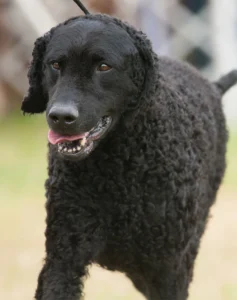
Picture Credit- Getty Images
English setter
The English setter, a medium-sized dog with a long, silky white coat with different speckles, was among the earliest recognized hunting breeds.
Their demeanor is often that of being kind, mild, and tolerant. That’s why everybody knows that poodles are the “gentlemen of the dog world.
Most English Setters are at home in the water and enjoy taking occasional swims for recreation. The water can bring out their adventurous spirit and courage. That is to say, these lovable canines are excellent with kids and make wonderful friends.
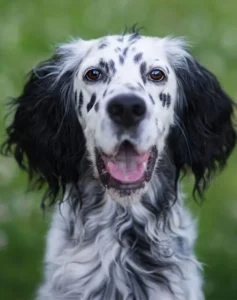
Picture Credit- Getty Images
Flat-coated Retriever
Flat-coat Retrievers were created for hunting in the waters and on land. These dogs are also English. They have fun playing and easy training. This animal requires a great deal of physical exertion and is also a natural hunter – the perfect companion to take swimming.

Picture Credit- Getty Images
German Shepherd
German Shepherds have been specifically trained for the sport of swimming, unlike other breed dogs mentioned above. It can be useful in many ways ranging from hunting, tracking, protection, and aiding. Since they’re naturally athletic and bold dogs, they will be better at swimming and will be more comfortable with water.
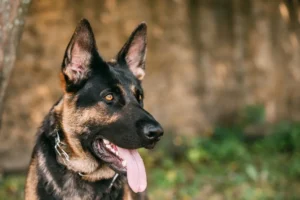
Picture Credit- bruev/iStock
German shorthaired pointer
German shorthaired pointers were bred as hunting dogs, so they have a lot of energy and endurance, but their short coats don’t provide as much protection as the coats of certain other water-loving canines.
These canines, like many others bred for water, have webbed paws and streamlined bodies and coats that make swimming a breeze.
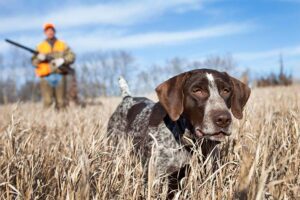
Picture Credit- Getty Images
Irish Water Spaniel
The Irish Water Spaniels appear to be an aquatic breed of water dogs similar to the poodle. Its ancestors were originally based in Ireland’s lands. The highest spaniels on the planet, they are also the oldest and most unique water dogs. Irish Water Spaniel has long been regarded as a very smart dog.
Shannon Spaniel, Rat Tail Spaniel, Whiptail Spaniel, and Bog Dog are just a few of the many names by which the Irish Spaniel has become known through the years. The Irish Water Spaniel was officially recognized by the American Kennel Club in 1878, a full century after its arrival in North America in the mid-1800s.
These dogs have naturally water-repellent coats. They are very dedicated to their parents, although socialization at a young age is important. Irish Water Spaniel is great with children and other animals since he is energetic and ready to join the family.
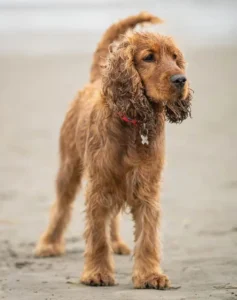
Picture Credit- Getty Images
Labrador retriever
Labrador retriever, or Labs for short, is the most popular breed in the United States. They traced their ancestry back to the St. John’s water dogs and were originally intended to recover ducks and be the fur-ever friends of fishermen.
Labrador retrievers are kind, versatile, and intelligent dogs. You can see it in a variety of settings, from therapy to hunting.
Despite their athleticism, they tend to gain weight easily and need to make a concerted effort to exercise and eat well.
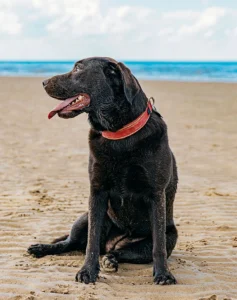
Picture Credit- Getty Images
Lagotto Romagnolo
This Italian dog is often referred to as the “Lake Dog of Romagnolo” due to its origins in the region.
Originally developed as a gundog for waterfowl, it has now found further use in tracking truffles. They’re great at swimming and willing to do any work for money.
This cute worker’s sense of smell is second to none. This water dog is on the smaller side of the typical medium-sized kind. One of the rarest dog breeds, with 500 in the US and roughly 2,000 globally.
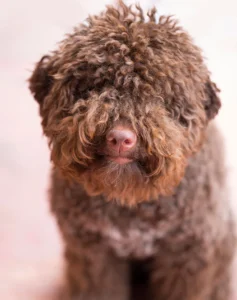
Picture Credit- Getty Images
Newfoundland
The Newfoundland is a big, friendly dog who loves the water. This large breed originated in Canada from European fishermen bringing their dogs across on ships. Because of their marine environment, these fishermen began developing a kind of dog with the ability to swim and save people from perilous situations.
These dogs are strong enough to swim through the water with ease. Plus, they have an innate sense of what to do to help those in need, which has made them true heroes.
This huge dog was obviously meant to spend its life in the water, as its thick coat is adapted to keep it warm when swimming in the ocean’s cold currents.
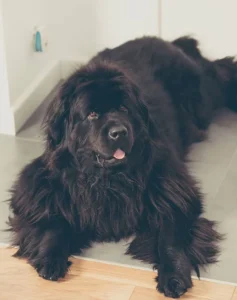
Picture Credit- Getty Images
Nova Scotia duck-tolling retriever
A small-statured, water-loving retriever with a distinctive tolling talent is one of Canada’s most prized breeds. The Nova Scotia duck tolling retriever, also referred to as a “toller,” gets its name from its remarkable ability to toll or retrieve waterfowl within range of the hunter by using amusing antics. In the event that a waterfowl is shot, the toller is more than willing to enter the water to retrieve the animal.
These pups require lots of activity and don’t give up lightly. While they learn rapidly, Nova Scotia Duck Tolling Retrievers can be stubborn. Teach early, practice often and don’t forget the treats.
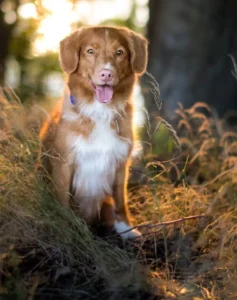
Picture Credit- Getty Images
Otterhound
The cute, unique breeds from the United Kingdom have rough waterproof undercoats and greasy undercoats, making the dogs ideal for water activities. The animals were bred as otter-hunting animals that could be seen in a wide range of waters.
Otterhounds enjoy playing and swimming, and they are friendly to children too. Because of their size, strength, and water prowess, they are not a good fit for many households.
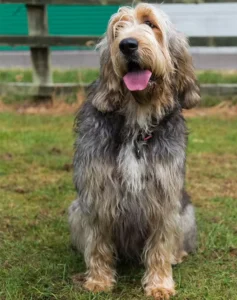
Picture Credit- Getty Images
Poodle
Standard poodle, despite being one of the brightest, most beautiful, and trainable breeds, is extremely active and playful and needs a great deal of daily exercise. Despite the fact that their low-shedding coat is beneficial for persons with allergies, these dogs nevertheless need to be groomed frequently.
The breed, which includes toys and tiny versions, is well-suited to life near the water and takes to the water quickly because of its innate curiosity and willingness to try new things. According to the American Kennel Club, the word “poodle” comes from the German word “pudelin,” which means “to love the water.”

Picture Credit- Getty Images
Portuguese water dog
Among the many titles given to the Portuguese Water Dog are “dog of Algarve water” and “Portuguese fishing dog.” The Algarve region of Portugal is the birthplace of this breed. It was employed by fishermen as a messenger between vessels to retrieve broken nets, to recover lost or damaged tackle, and to herd fish into nets.
The rare breed of dog is connected to the Spanish Water Dog. It has a high IQ, plenty of energy, a strong body, listens well, loves people, is quick on its feet, and can think for itself.
To inform their owners, Portuguese water dog breeds can utilize voice that spans multiple octaves; therefore, despite their low volume, they have the potential as hearing-assistance dogs. It also has a great memory for items and can learn complex commands.

Picture Credit- Getty Images
Pudelpointer
The Pudelpointer is a hybrid of the English Pointer and the German Poodle, making him adept at both land and water retrieving. Due to its history, this breed is highly skilled at tracking, pointing, and retrieving.
In addition to its love of water and innate retrieving instinct, this dog is also calm, disciplined, clever, trainable, and eager to please. It’s capable of going the distance and working nonstop.
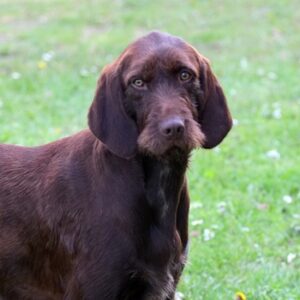
Picture Credit- Getty Images
Schipperke
Although you might not know it, the name of this breed also gives it away: “schip” literally means “boat” in Flemish, and “schipperke” means “small captain.”
The Schipperke is a breed of boat dog that originated in Belgium. Naturally, they are also at ease in the sea, as evidenced by the fact that they serve fishermen as watchdogs and ratters on ships.
The dense fur of these small dogs serves a dual purpose: keeping them warm in the water and fueling their boundless energy.

Picture Credit- Getty Images
Spanish water dog
Several other European water dog breeds share a heritage with the Spanish Water Dog, making it an extremely old breed. There is a strong herding tendency in the breed, and their history is heavily intertwined with water.
While the Spanish Water Dog is kind, smart, and devoted, its cute appearance belies its strength, agility, and stamina. This breed is useful for hunting ducks, herding sheep, and protecting the family home. There were three sizes, bodies, and coats in Spain.
This breed works hard and accomplishes its goals with ease. It’s also great with kids if they’re introduced to the dog at a young age, and it makes for a great companion overall.
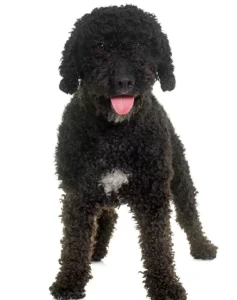
Picture Credit- Getty Images
Wetterhoun
The Wetterhoun was developed in the Dutch province of Friesland for the purpose of retrieving ducks and small mammals. Its Dutch moniker means “water dog” in the language’s original context. The Otterhound, a dog breed native to Britain, is sometimes misidentified as this one.
Over 400 years ago, it was developed, perhaps by crossing the Old Water Dog with a Gypsy dog. The land and water retriever makes a great family dog since it is quiet, protective, and headstrong without becoming violent.

Picture Credit- Getty Images
FAQs
Are water dogs rare?
Yes.
Are water dogs friendly?
As long as they feel safe, they can be bold and adventurous in the water. They are excellent household pets despite having a history of being bred as hunting dogs. Just make sure they have enough room to run around and play to burn off all that excess energy.
Why do dogs like water?
Dogs share our enthusiasm for watering holes like rivers, lakes, the ocean, and swimming pools because they are great places to have fun and get some much-needed relief from the heat.
Our canine companions benefit greatly from time spent in the water. Because it engages all of their muscles, it improves cardiovascular health and lung capacity without putting strain on their hips and backs.
